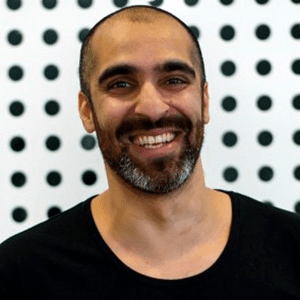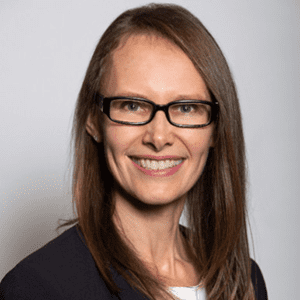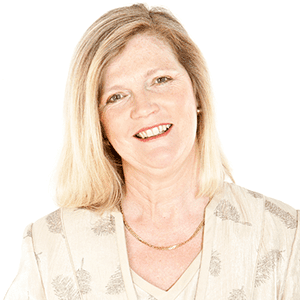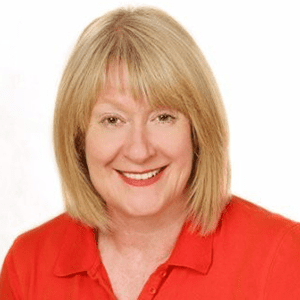

#80: Decoding marketing success strategies for business leaders
Sophie Pank is an authentic marketing professional with a knack for simplifying the complexities of marketing. This episode focuses on two key areas for business leaders wanting to ramp up their marketing efforts. It may be just the right time to review marketing strategies and ensure you have alignment and collaboration across your business.
- Alignment between sales and marketing teams: Sophie underscores the critical need for alignment between sales and marketing teams. By stressing shared goals, open communication, and collaborative efforts, she illuminates the significance of fostering synergy between these functions. This collaborative approach ensures a unified vision, enabling organisations to fine-tune their marketing strategies for heightened effectiveness and efficiency.
- Fundamentals of effective lead generation: Delving into the fundamentals of successful lead generation, Sophie highlights the importance of understanding the ideal customer profile. Advocating for active audience engagement, she encourages businesses to solicit feedback and adapt their strategies based on real-world insights. By prioritising a dynamic approach informed by genuine audience interactions, businesses can fortify their lead generation efforts and achieve sustainable growth.
Sophie insights serve as a compass, guiding leaders toward strategies that not only simplify complexities but also ensure enduring success in the ever-evolving realm of marketing.
Stephanie: Welcome to TEC Live. Stephanie Christopher here, CEO of The Executive Connection. We connect leaders with a trusted network of people who help them succeed. Our guest today is Sophie Pank, founder and chief marketing officer at Front of Mind Marketing Services, consulting in brand positioning and marketing strategy through to campaign development and review. So Sophie has an impressive 15-year career in marketing, starting off in very small business and working her way to top global brands like Morgan Stanley, American Express, CommBank, and Xero. She’s witnessed first-hand the incredible impact of a powerful marketing strategy and is passionate about unlocking this knowledge and sharing her expertise with businesses that are looking to scale-up. Sophie Pank, welcome to TEC Live.
Sophie: Thank you. Thank you so much for having me.
Stephanie: It’s great to have you here. So you said something to me a while ago about having to, I think I’m going to get this right, having to shift your mindset from being in big business to small business.
Sophie: Oh yeah.
Stephanie: Tell me about that.
Sophie: And I’ve really, I’ve got to thank Rod Drury who’s the founder of Xero for giving me the opportunity to move from that big business into that scale-up head space.
Stephanie: Because Xero wasn’t really big business in your day, was it?
Sophie: It definitely wasn’t. We had around 300 employees in Australia and there are thousands now, but it took me a really long time to transfer the knowledge that I had into a scaling business. But the biggest challenge was breaking down the barriers of needing confirmation from my manager every single day that the way that I was talking was correct, that the way we were communicating with customers was correct. It was my manager at the time, Penny Elmslie, who is one of the best mentors that I’ve had from a marketing perspective, she built the Xero brand in Australia, she came to me one day and she was like, ‘I didn’t hire you because you’re a child. You’re an adult, make your own decisions.’ And I was like, ‘Oh, okay.’ And from that moment on, it was just agile. We were moving so quickly on the way that we could go to market because she trusted me, and that’s very, very different to a big corporation.
Stephanie: So there’s a couple of things, and you’ve picked up something quite different from where I thought you were going to go and that’s the idea of having to seek approval along the way. So that’s actually a whole other topic about leadership in big business, but we can move from there. But that’s interesting about empowerment and because you’re part of a machine and some way up that machine from a marketing perspective is a big brand center.
Sophie: That’s right.
Stephanie: The other thing I was going to with big business versus small business is having people who do stuff. In a scale-up and in a small business, you have to do things yourself.
Sophie: A hundred percent. I think this is where the agility comes in because you do everything, from speaking to the customers, understanding what their problem is, developing a product with your product and research team, designing that product, taking it to market, creating a story around it, going to the media about it. You own the end-to-end process and there’s no one that knows the customer problem and the solution that you’re developing better than you do. And so people can’t question you and you can work really, really quickly, and it comes back to knowing what the problem is you’re solving for the customer.
Stephanie: I know that speed was something I loved from big business to a mid-size business. Just, you can make a decision and act on it straight away.
Sophie: A hundred percent, and when I moved from Xero to Deputy, that’s what I was looking for as well. So Deputy is another tech scaler, HQed in Australia, and every day it felt like you were making an impact because we were moving into new markets, we were testing our proposition with new industries. Every day, even if you were doing something really small, it felt big, and people inside the company were learning and our customers and prospective customers were sitting up and taking note as well.
Stephanie: Yeah, really interesting. So with that shift, your timeline from some of the big businesses, and Morgan Stanley’s a long time ago for you and a pre-GFC for you and on the other side of the world, but in that period, marketing’s changed. What is the discipline and the art of marketing has changed?
Sophie: Yeah, it’s incredible. Even if we look back at the evolution of marketing being a one-way communication stream to now being real time feedback from your perspective or existing customers, it is such a fast pace that we can be moving as a marketing organisation or a marketer. Even the evolution of it being out of home, the one-way communication, to then moving into the digital space where you get this two-way feedback and in real time, that’s happened over just the last 10 years. It’s been incredible.
Stephanie: What do you mean by out of home?
Sophie: Out of home is digital, oh sorry, advertising on billboards, it’s an above the line element.
Stephanie: Right, okay. So magazine ads, TV ads, billboard ads.
Sophie: Absolutely.
Stephanie: Qantas magazine.
Sophie: Absolutely. At this point, you are looking to go to market with one message that you’re hoping is going to hit the segment of the market that you’re looking for. When you look at digital, you can be very, very segmented in the people that you’re targeting and the message that you go to market with, and you can be a lot more refined in that space.
Stephanie: Is there still a place for above the line for every brand or is that for big stuff?
Sophie: Yeah, absolutely. No, I think there is. I mean, not everyone is always in a buying cycle, and so my business name is front of mind, you want to be front of mind even when you’re out of someone’s buying cycle because you never know when they’re going to enter into that buying cycle. If your competitor is out, they have a message in market, and all of a sudden that customer or prospective customer flips into a buying cycle, you don’t want your competitor to be the first brand that comes front of mind to a prospective customer. So brand, there’s a rule, especially in the SaaS world, that you should be investing around 40% of your marketing budget into brand, and that may be in TV, radio, out of home, or on socials, and then the other 60% should be spent looking to target people who are in that buying cycle and bringing them through the sales and marketing funnel.
Stephanie: Yeah, yeah. I think Ashton Bishop talks about being even higher. He’s a great friend of TEC and a frequent guest on TEC Live. So it’s interesting that balance between brand and digital. So the work you’re doing with business owners now-
Sophie: Sorry, can I correct that?
Stephanie: Yeah, you can.
Sophie: It’s brand and acquisition. You can do brand marketing in a digital space.
Stephanie: Oh, got it, got it.
Sophie: It’s just the message that you’re out in market with. It’s about getting people to understand your purpose, what you’re there for, and just understanding who your brand is. And then you’ve got your acquisition, you change your acquisition message to be a bit more punchy towards this is the problem that we’re solving for and bringing them into the buying cycle. So it’s kind of brand is, oh, I know you exist, and then the acquisition message is, I’ve got a problem. Oh, that’s how you’re solving it. Okay, I’m considering you.
Stephanie: This what you could do for me now.
Sophie: That’s right. And you’re bringing them into that consideration phase before you hand them over to the sales team and they close that deal.
Stephanie: It’s really interesting that you say that, Soph, because I think people think brand is only above the line.
Sophie: Mm. Mm.
Stephanie: And that doesn’t work for every business these days.
Sophie: No way. No way. Above the line is expensive, and again, it’s mass communication. So if you are solving a problem for a really niche segment of the market, that’s kind of a waste of money to be out there on a billboard and on a highway where your target audience aren’t coming anywhere near it. But if you think about this podcast, for example, is building your brand. It’s thought leadership, it’s a piece of content and that can be shared to prospective audiences so that they understand what you guys can do for them or what you stand for. That’s brand advertising, and it doesn’t have to be above the line. It can be a thought leadership piece that can be targeted one-to-one.
Stephanie: What about events for brand?
Sophie: Yeah, you can, and again, it depends on-
Stephanie: Who you’re targeting.
Sophie: Who you’re targeting.
Stephanie: Yeah, yeah.
Sophie: But if you’re working in HR you probably want to be at the HR events because people are there looking to update their HR technology or whatever it is. So yeah, events is great and I think events are super important at the moment, especially after the pandemic, to get out there and build those relationships again. It really hit home for me in my previous job where we were a tech company and I met with a customer, we’d had great banter throughout the event, they’d gotten up on stage, talked about our product, and then after the event he said, ‘It is so nice to meet someone in person. I literally just thought you’re a digital company.’
Stephanie: Yeah, right.
Sophie: And there’s hundreds of people working behind the scenes that were growing this brand, but we didn’t have a one-to-one identity, and that personal identity is really important because it builds loyalty. So if someone has more of a relationship with you, it’s harder for them to really let go of that relationship. Right? If you’re just a transactional relationship, retention’s going to be a lot harder.
Stephanie: Absolutely. So something that I know really drives Front of Mind and drives who you are anyway is about the consumer. Knowing your consumer, consumer first. How do you help businesses get started in a marketing strategy that starts with the consumer?
Sophie: Yeah, there’s two different stages that I help businesses in. So my segment is very much focused on the tech sector. I work with businesses that are at early stage concept. They have an idea, but they haven’t gone to market. And so for those businesses, it’s about finding who they think their ideal customer is, going out and speaking to those potential customers or that audience, and validating whether the problem that this business thinks that they need to solve is a big enough problem that they can commercialise the solution.
And then the other segment of the market that I work with are more established tech businesses. They may be three, five years into the business, but they have found that their lead generation has slowed down. And so I work with them to identify, okay, well, there’s a hundred percent of the market out there, but we have to segment that market up and realise which ones you have to do a lot more education around to get them into a buying cycle versus the ones that are your lowest hanging fruit that you could go out and do a demo with today and they buy your product tomorrow.
I’ve got this theory around the bell curve, and I think a lot of businesses see really early results and they see this amazing spike when they launch their product to market because they’ve got these early adopters that come on and they go, ‘I’ve got a problem. I’m looking for a solution. You’re the only one that’s solving this problem at the moment. I’m going to come and take your product and be on the journey with you.’ And then all of a sudden, those early adopters turn into the next in the bell curve, not the laggards but the rest of the market, and they become a lot harder to influence into the buying cycle. And so you see this really fast growth and then this plateauing of leads coming in, and it’s about helping businesses understand that you can’t continue marketing or selling the same way. You can’t just go out and flog the features of your product or you’ve really got to understand-
Stephanie: We’re new, this is exciting.
Sophie: Hundred percent. No one else is out there.
Stephanie: Get on board. Get on board, yeah.
Sophie: Exactly, because guess what’s happened? In that time that you’ve got those early adopters, competitors have popped up around you and the market may have changed. So it’s about, okay, let’s refocus and really understand what the next stage of growth looks like for you because you can’t use the same techniques that you used previously to get you to the next stage of growth.
Stephanie: Makes so much sense, and I can picture that, and I think what you’re talking about with tech companies actually relates to all small businesses.
Sophie: Absolutely.
Stephanie: I think it’s the same thing. Well, most of the small businesses that I work with aren’t early stage, they’re well and truly established, but it’s the same thing, Soph. It’s about knowing who your customer is, segmenting your market and being very explicit, and what you’ve been doing forever, it’s probably time to shake it up anyway.
Sophie: Yeah, hundred percent.
Stephanie: So let’s talk about lead generation, like everyone in the world. It’s the thing. If it’s not sales, it’s lead generation who’s in the spotlight this week as the business owner.
Sophie: Yeah, hundred percent. Yeah.
Stephanie: What are the fundamentals do you think to effective lead generation?
Sophie: Oh, look, the biggest one, and I was having a conversation with a sales consultant the other day and he was saying, ‘Every time I come into a business, I’ve got a sales problem.’ And you have a look and you come in, you lift the hood, you’re like, ‘You don’t have a sales problem, you’ve actually got a sales and marketing problem because your marketing and sales teams aren’t talking to each other.’ I’m watching some of my clients, I’ve seen it and I’m hearing it everywhere, but you’ve got marketing who is marketing to this segment over here, sales who’s like, ‘We’re not marketing to those people, we’re talking to this segment over here,’ and there’s no consistency across the whole marketing and sales pipeline. The sales and marketing teams are essentially the same team, but for some reason there is always this great divide between marketing and sales. And so if your sales guy sitting is over here telling-
Stephanie: What’s this?
Sophie: Yeah, hundred percent. That’s exactly it. And for people listening to the podcast, that’s Stevie pointing the blame at the other team, whereas the most effective sales and marketing teams are singing from the same hymn sheet. That really starts with identifying what the problem is or who the segment is that we’re going after so we’re all going after the same industry because if you’re creating content for hospitality over here, but your sales team are selling to healthcare over here, there’s absolutely no consistency in your messaging or support that each other can give, that sales and marketing can give to each other.
So that’s really important is that you get on the same page with the segment that you’re after, but it’s also really important that you are both positioning yourselves in the correct way. I think this is really interesting because as you grow, the macro environment around you changes. Right? And so, for example, you may have come in and thought you were solving for this problem in the world, but my favorite thing, and I saw this a lot when I was working in FinTech, was when a new piece of regulation came in, financial regulation, and all of a sudden you could go out and create fear, uncertainty, and doubt with a new piece of regulation that had come in, and it was so great.
Stephanie: Okay, I don’t have to go out.
Sophie: It’s so fun. Right? And that’s what I’m always searching for is, okay, how can we create or position ourselves to be solving a problem that is going require you to take your head out of the sand because the worst thing that you can be in a sales cycle is have inertia where the customer’s just like, ‘Well, what’s the point? I can continue to do what I’m doing and I’ll just continue that way and there’s nothing that’s stopping me. I’m scaling well enough.’ But it’s about finding something that’s really going to get them to sit up and take note.
And so you’ve got to be in developing that story with your sales team. Marketing and sales can’t have different ways that they’re kind of positioning themselves and talking about the problem that they’re trying to see.
Stephanie: Why is it so separate?
Sophie: Do you know what it is from my experience is that marketing’s goals finish at lead generation and sales goals finish at close, closing the deal. But if marketing is giving you 50 leads and that’s hitting their target and then the sales team are receiving those leads and the quality of those leads is maybe a 10% conversion rate, then sales is never going to hit their target because marketing isn’t coming to the party. And if marketing and sales aren’t having those really challenging conversations with each other and holding each other accountable for each other’s success, then they’re never going to work together.
I think it starts at the top, to be honest, is they have to have those shared goals. So those closed deals need to be the goals of marketing as well that they look at lead generation, conversion into sales, and then they’ve got to close one target as well, and then that’s going to bring everyone on the same journey because if you’re just like, ‘Well, I’ve done my bit and I’ve given you the leads as a marketing person,’ and the sales team are like, ‘I can’t close these leads,’ then no one’s going to be successful, and that’s a really big point of friction. I think it starts with that, and then building trust and open communication between sales and marketing.
I hear it all the time, ‘I’m too busy to talk to sales.’ That’s ridiculous. If you don’t know the deals that sales are closing and they’re different to last month, then you can’t pivot your targeting strategy or your messaging strategy to the audiences that are actually really interested in your solution at the moment.
Stephanie: Do you know I think a challenge for marketing and marketers? Everyone has an idea how to do it better, and I think that’s a real challenge.
Sophie: Yeah. Do you mean outside of marketing?
Stephanie: Correct.
Sophie: Yeah. Everyone’s a marketer.
Stephanie: Including sales teams.
Sophie: Yeah. And that’s fine. Do you know what? Give sales team budgets. We did this at Xero was the sales team wanted to go and do events or they wanted to… And so they put a business case together and they were allowed to get $500 to host an event in the office to get the accountants to come in, and it would just be a networking event, and marketing don’t have time to do hundreds of these things a year, and there were so many sales teams. That’s fantastic. Go and do it. I mean, what that is is giving everyone the autonomy to build the pipeline so that’s awesome. Let them do it.
But there is definitely specialist marketers, and the thing about marketing, and I know we’ve all fallen into this trap before, even as a marketer myself, changing from being a product, a person or a marketer that can market a product really well and talk about products and features to them being a lead generation marketer where I’ve had to fill the sales pipeline. Marketing isn’t a one-size-fits-all discipline. I am not an expert on social. I’m not an expert on digital. And so you can’t say, ‘Oh, I know how to do marketing,’ because there’s just so many facets of it.
Stephanie: It’s like saying I know how to do strategy.
Sophie: Hundred percent.
Stephanie: I think that that is a challenge. The other one that I find everyone has a view on is brand and a view that it’s so easy. Just do brand stuff. So everyone knows the brand. It’d be great if everyone knew the brand. And that’s a real challenge, isn’t it, for marketers?
Sophie: Hundred percent. And do you know what? The best thing that you can do to build a brand is to activate your employees because if they… And do you know what? It starts with making sure you have an amazing employee experience so that everyone feels really secure and happy at work, and then you’ve just activated, let’s say you’ve got a team of 300 people, you have activated 300 brand ambassadors. And if you give them the autonomy to go out and they understand what your purpose is, then you give them the autonomy to go out and talk about where they work and the problems that they’re solving and what’s so cool about working at your company, then all of a sudden that’s brand being done. Give them the autonomy to be able to write a piece of content as a guest post or get out there on social or go to events and tag the company in them. All of these are free pieces of brand and it’s giving every angle of building the brand as well.
So whether you’re in IT support and you’re saying, ‘Do you know what I love about this company is we invest in the most incredible IT infrastructure, and what that means is our customer’s data is always safe,’ boom, that’s like an aspect of the brand that someone who’s in marketing that doesn’t have a tech background can’t talk about. And so you’re attracting all these different points of views out into the market, that’s awesome for lead generation, but it’s also awesome for recruitment as well because you can see you’re going to be attracting really interesting people.
Stephanie: And it fits in with Mark Puncher who’s another friend of TEC Live and TEC, and it’s exactly what he talks about. He’s a marketer who actually helps organisations with their employer value proposition, and that’s a big part of branding. So let’s talk about lead generation.
Sophie: Yeah.
Stephanie: It’s something that people expect, including me in brackets, marketers to be able to turn on. We need more leads, get some lead generation happening, what’s happening.
Sophie: Yeah, yeah.
Stephanie: Is it something that you can scale pretty quickly or turn it off and on once you’ve got the foundations in place? I can see from the look in your eyes that I’m being a very naive CEO, but that’s my place in this world.
Sophie: Absolutely. That’s your job.
Stephanie: So tell me about what are the foundations you have to have always on for lead gen and how do you scale it up if you need to, when you need to?
Sophie: Yeah, hundred percent. There is not a one-size-fits-all answer, believe it or not, but it definitely starts with knowing who your audience is. So we start with the ideal customer, and it’s so important to be able to refine what is the mass market into somewhere that you can really target. What we’re looking for there is, it might be things like they have to have a certain number of employees within the business or what’s their annual turnover or…
Stephanie: What are their main pain points or what’s important to them.
Sophie: Yeah, well, you don’t necessarily know that at the moment. You’re just trying to understand what the profile of the business is. So for example, if you’ve got a one-person business, TEC is not necessarily going to be the right fit for them, but they need to have a CEO, a CMO, and 50 employees, and you know that type of deal closes really, really quickly for you guys. So what you’re trying to do is just, at the very beginning, shorten the sales cycle as much as possible. If you had a lot of budget, you would go out and do segmentation research and you would say, ‘Okay, with that ideal customer profile, that’s about 25% of the market, and for 25% of the market, if we’ve got all of that 25%, we’d be able to hit our commercial targets this year. So we’re just going after that segment of the market.’ That’s never going to happen that you’re going to get all of that.
Stephanie: Of course. Soph, what I’m hearing from you is this important bit of work upfront is to be clear on who your segments are and who your ideal customer is and what they look like.
Sophie: Absolutely. The reason that you do that is because once you’ve got that information, you can start to build your channel strategy around them. So all right, I’m going to test that I’m giving 40% to digital because I know these people spend 20% of their week on LinkedIn. So it’s really important that we’re always on LinkedIn doing a bit of brand and also doing bottom of the funnel, what we call bottom of the funnel stuff, which is getting people into the consideration and looking at your product and services phase.
Now, how you find out where people are spending their time, once you’ve got that ideal customer profile, go out and speak to that audience. This is what I see day in, day out. People are so scared of speaking to other people and understanding if what they’re selling is actually positioned correctly or solving a problem or priced correctly. Just go and speak to them. Put a message out on LinkedIn and say, ‘Hey, does anyone know anyone in the accounting industry that I could have a 40-minute conversation with?’ Just go and talk to them, what’s your day-to-day look like, how do you use technology within your business. Whatever the problem is that you’re solving, go and speak to them. ‘Oh, okay, do you go to any big events this year? Oh, why is that interesting to you? What forums are you part of?’ All of these things, you’re getting indicators as to where you can reach like-minded people to those people that you’re speaking with and that starts to build your marketing strategy. So you’re not throwing good money after bad and just saying, ‘Okay, well, let’s guess that they’re all on Facebook.’
Stephanie: Well, you’re not taking a guess.
Sophie: Yeah, exactly.
Stephanie: That’s from your own kind of worldview.
Sophie: A hundred percent.
Stephanie: So know who your customer is. Some deep customer research and understanding is very important.
Sophie: And guess what? You can do it for free. All you have to do is go and speak to five people.
Stephanie: Yeah, right.
Sophie: Use your network.
Stephanie: Yeah. Use your network, identify your channels and where they are, and then you’ve got something you’ve can scale up and down.
Sophie: You’ve got a base. A hundred percent. Yeah, use that information and then go and test. This is the thing, sometimes you get really lucky and you’ll get amazing lead generation, and sometimes you’ve got to continue to pull the levers and refine and see where people are going to come in. There’s not a silver bullet to it, and it’s really, I can imagine, so frustrating as a CEO going, ‘But we’ve had this incredible growth,’ and then don’t forget to look around the market and you think, ‘Oh wow, that piece of regulation came in and we didn’t do anything about it.’
Stephanie: or understanding what made the difference to get that growth.
Sophie: Absolutely. Is it that you’ve come off all of those early adopters and now you’ve got to change your narrative? There’s so many different variables so don’t ever stop looking outwards. I think the worst thing you can do as a business is just look inwards at your own data, but you’re going to have a very, very tainted view of what the world is.
Stephanie: So a few things there, and that last thing you said is really important. Don’t look inwards at your own data. Your instincts are important as well, I believe, your understanding of the market. Okay, so bringing all this together, and it’s been so good, don’t hire children, hire adults. Well, it certainly worked for you and the brands you’ve worked for. I think that that link between sales and marketing with the one target or the one goal, and while you were talking I was reflecting, both teams or both parts of the organisation just have different lead indicators towards that one goal.
Sophie: That’s right.
Stephanie: And so it’s thinking about it that way in a joined up way, I think that’s very important. And then, Soph, you’ve really talked about the importance of knowing who your customer is.
Sophie: Absolutely.
Stephanie: Don’t make assumptions. Get that foundation right. And then you’ve got something that you can build on.
Sophie: Hundred percent. And do you know what comes off the back of knowing your customer is authenticity because as soon as you’re talking from the perspective of the market instead of the perspective of yourself, then you have a really authentic brand that people can connect with, and I think that’s so important.
Stephanie: So big brands, major brands, little brands, I think there isn’t a more authentic marketer than Sophie Pank. I think everything you’ve told us about today, Soph, has really led to this idea about know who you’re talking to, talk to them and be authentic in your message. That was really good. Some great, great tips there and a great, simple way of explaining the complexity of marketing. Sophie Pank, thank you for joining us on TEC Live.
So that’s TEC Live for today. CEOs are in the business of making decisions and leadership is the art of execution. I’m Stephanie Christopher and look forward to talking to you next time.



